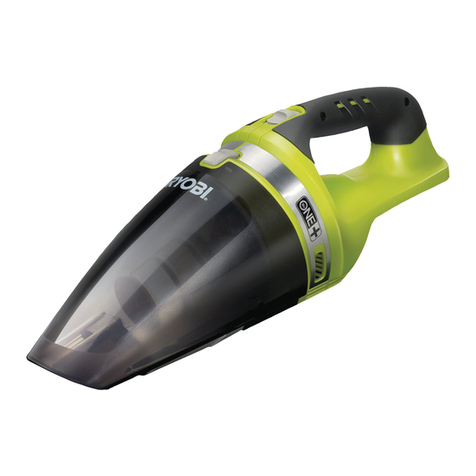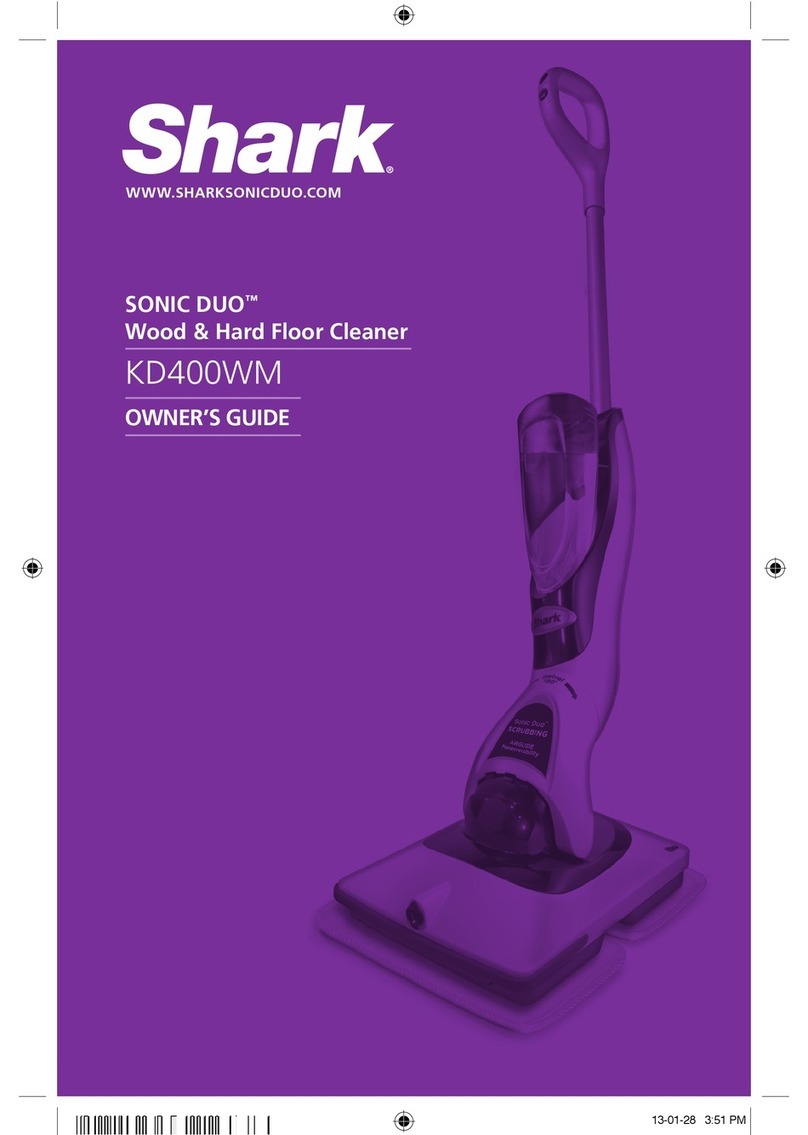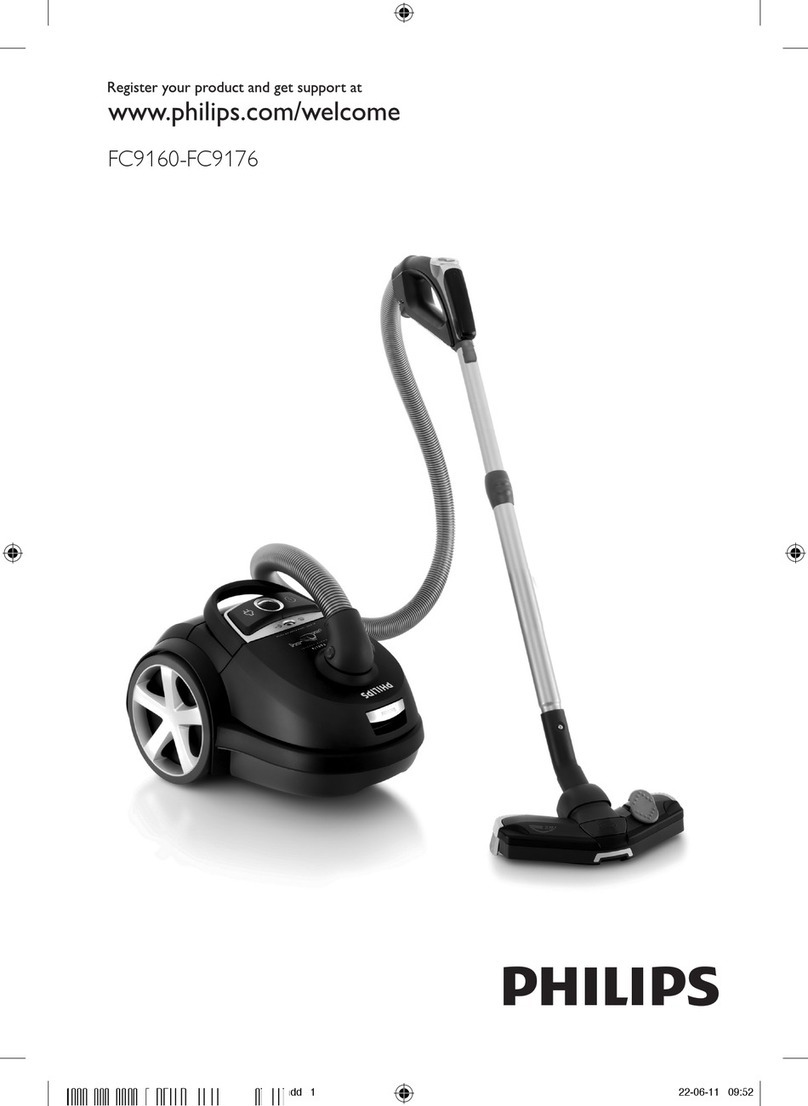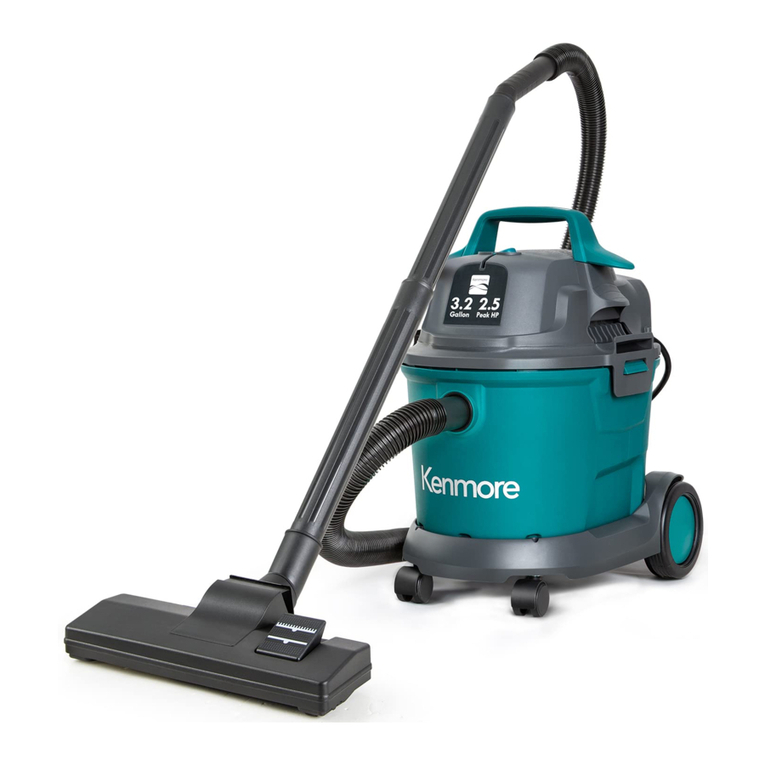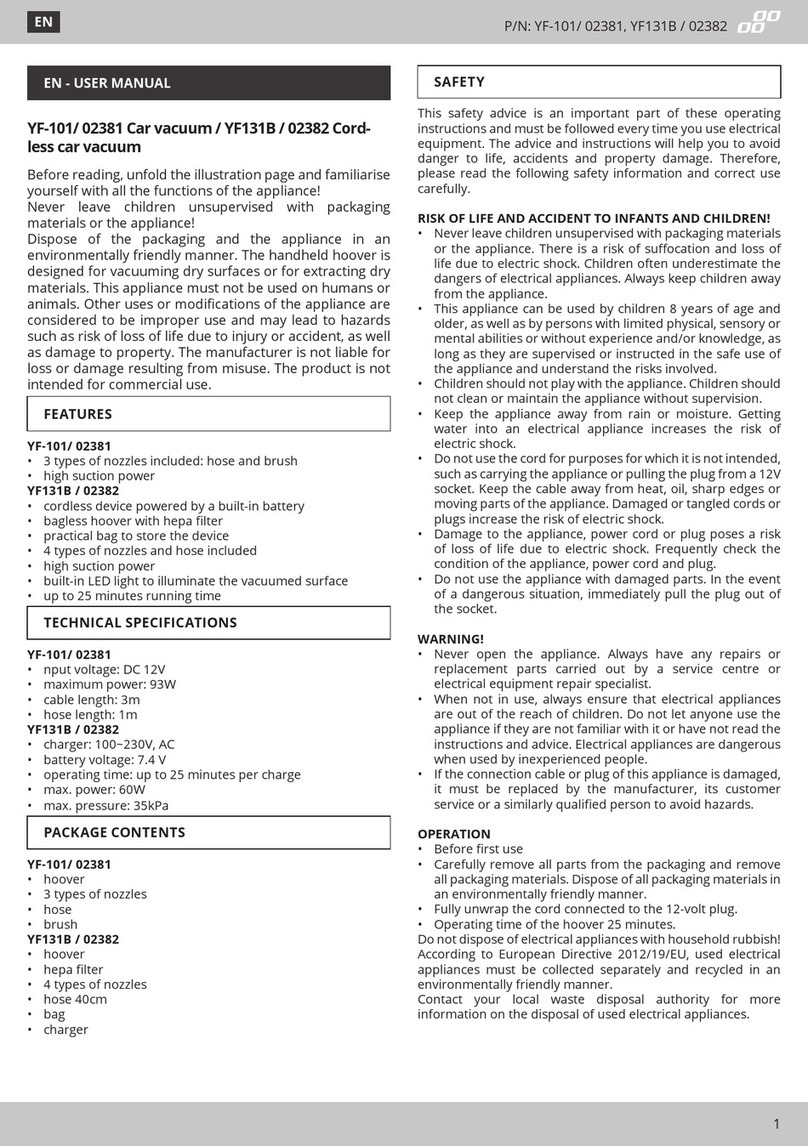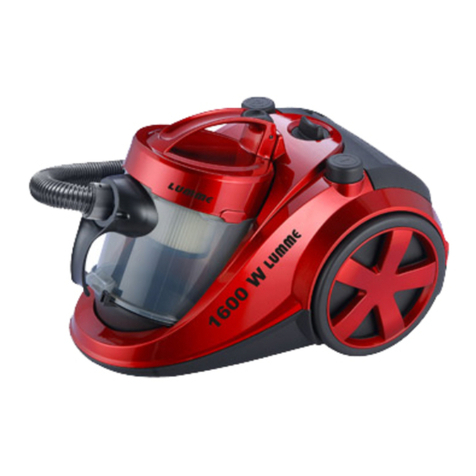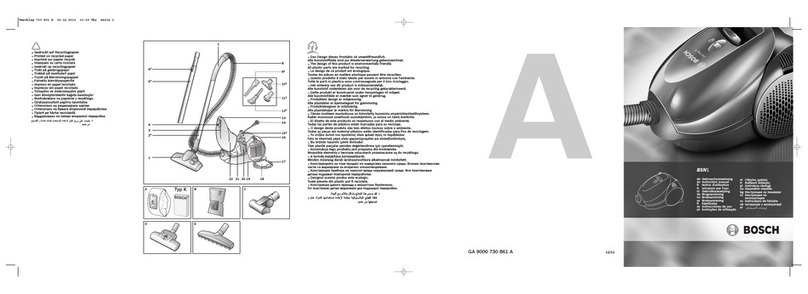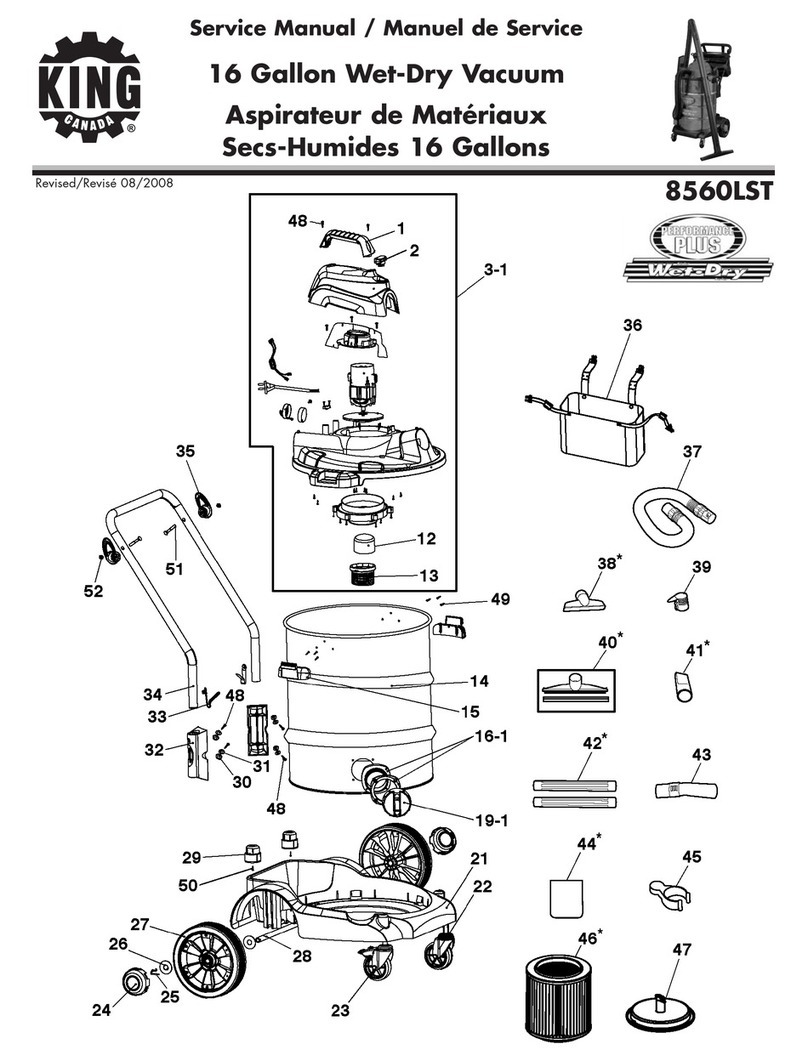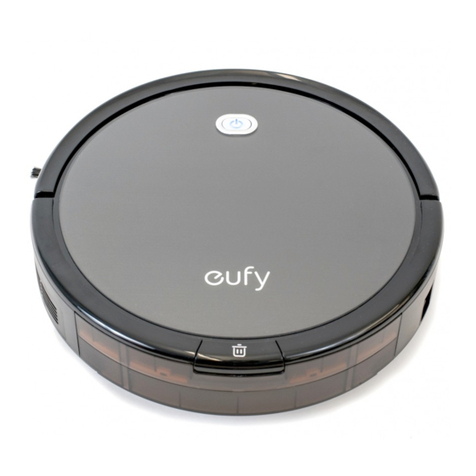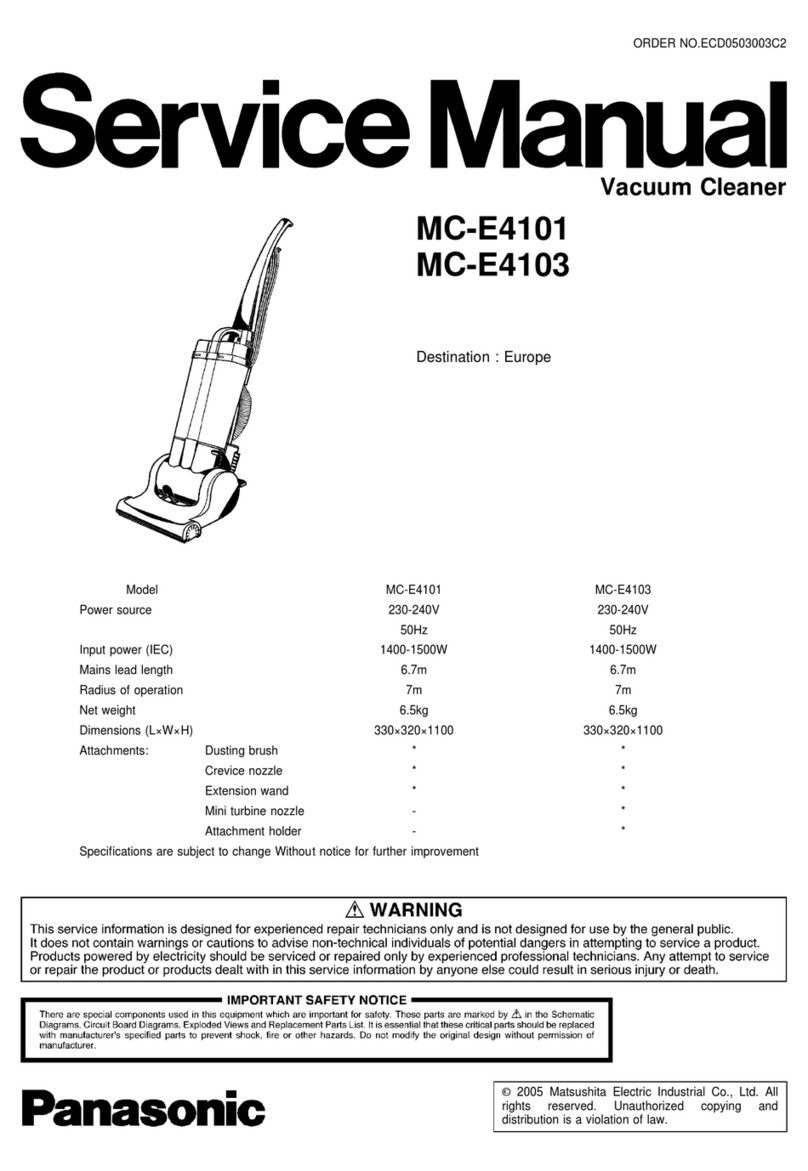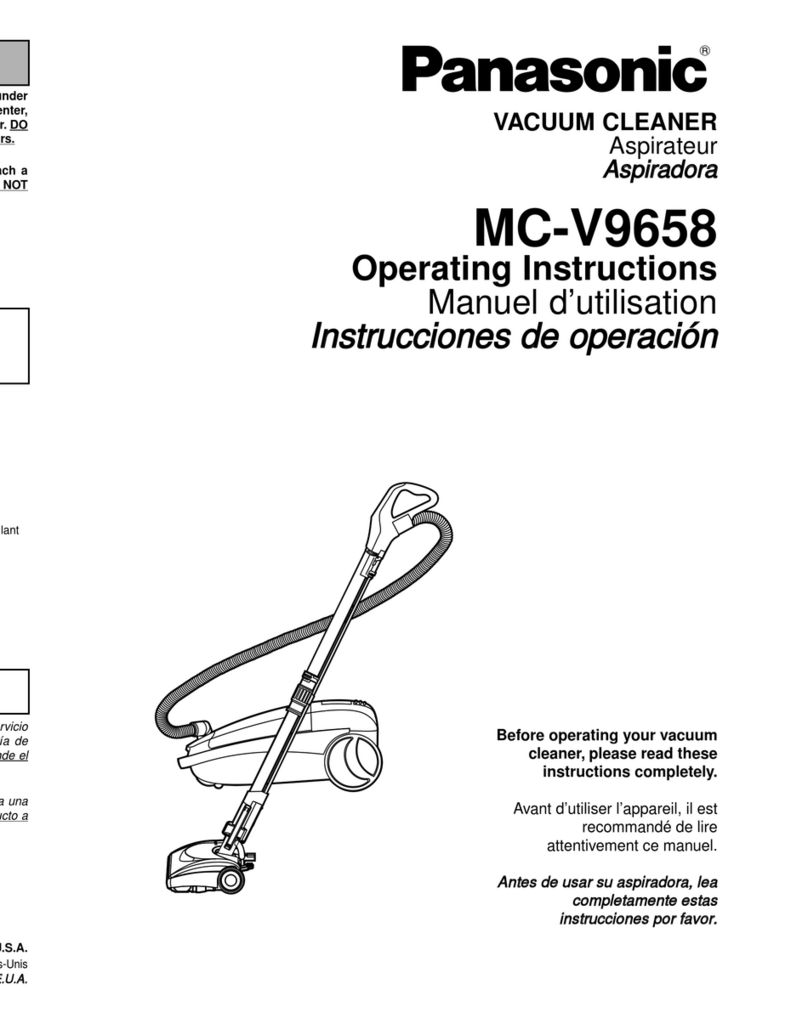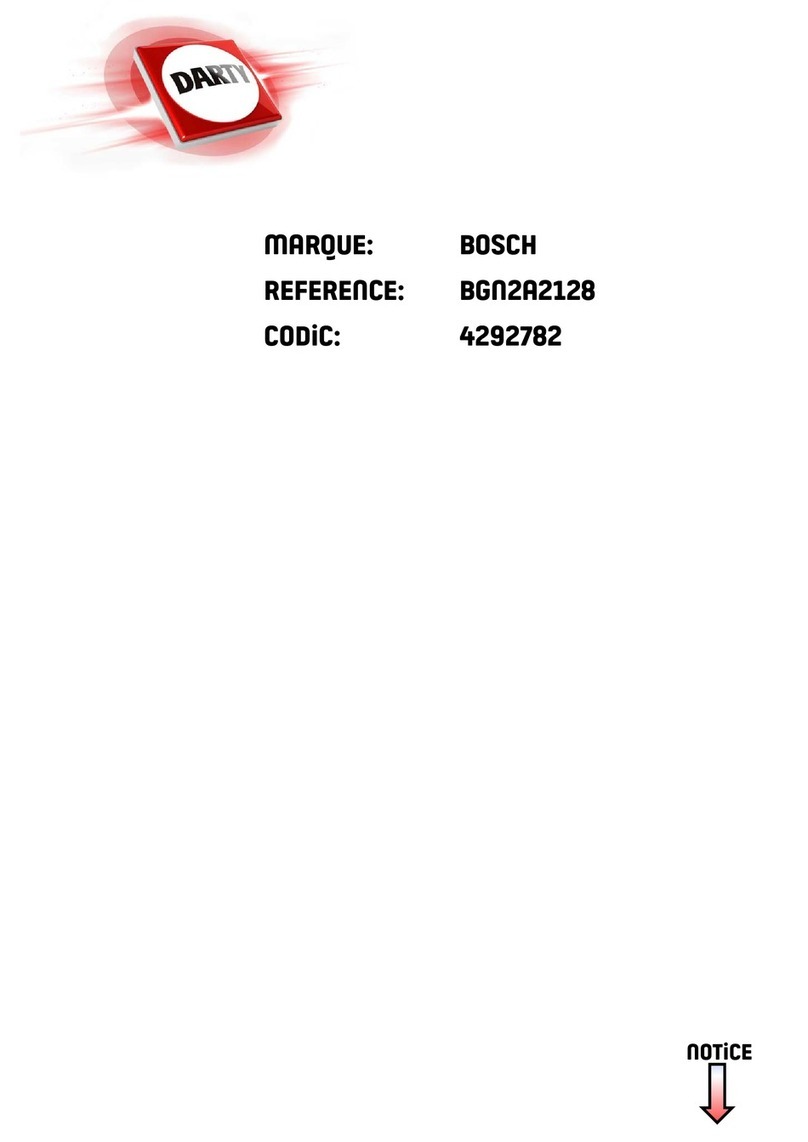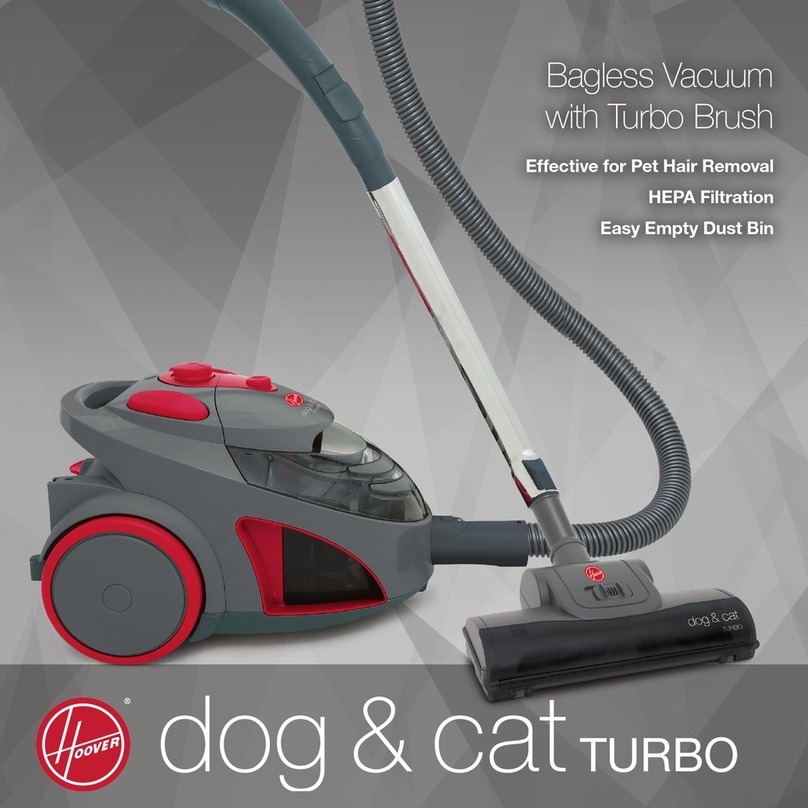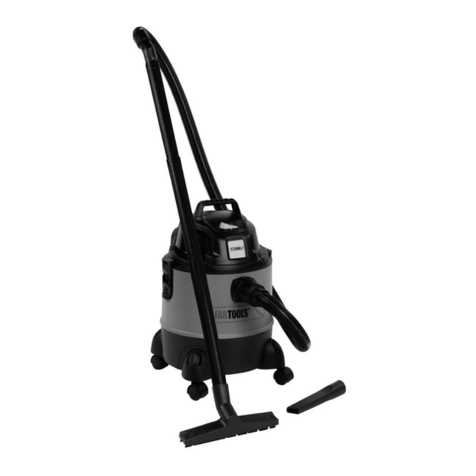Ryobi RACWDV30MC Operation manual

RACWDV30MC
OWNER’S OPERATING MANUAL
WET AND DRY VACUUM CLEANER M CLASS

Important!
It is essential that you read the instructions in this manual before
operating this machine.
Subject to technical modifications

DESCRIPTION
Components list
24
4
1
2
5
10 11
12
23
3
8
19
22
20
14
9
15
16
67
13
17
18
21
25
26
27
1. Stainless steel tube
2. Universal floor nozzle
3. Anti-static crevice tool
4. Anti-static round brush
5. Anti-static EVA hose
6. Caster Wheels
7. Disposal bag
8. Air regulator tube
9. Handle
10. Foam filter
11. Screws
12. Hygiene seal dust bag
13. Outlet-socket for Power Take Off
14. Filter basket
15. Safety float valve
16. Washable HEPA 12 filter
17. ON/OFF switch
18. Connector for the vacuum hose
19. Clamp (x2)
20. Tank
21. Drain outlet
22. Overload protection button
23. Power Tool adaptor
24. Retaining bracket (x2)
25. Filter self-cleaning button
26. Air flow control button
27. Power Adapter

DESCRIPTION
Please refer to pages 2 - 6 for instructions
1 2
3 4

DESCRIPTION
Please refer to pages 2 - 6 for instructions
5
6
1
2
34
5
6
13
2

7
1
2
5
6
DESCRIPTION
Please refer to pages 2 - 6 for instructions
8 9
3
4

10
press 3-4 times
Self-Cleaning Filter System
Scan Here for Demonstration of How To
Use Self-Cleaning Filter System
DESCRIPTION
Please refer to pages 2 - 6 for instructions
11 12
1
2
3

14
DESCRIPTION
Please refer to pages 2 - 6 for instructions
13
1 2
3

1
GENERAL POWER TOOL SAFETY WARNINGS
WARNING!
This appliance complies with the compulsory safety
regulations for electric equipment. However,
improper use can be harmful to people and property.
Please read these operating instructions carefully
and completely before switching the appliance on.
Keep the operating instructions, the guarantee certifi
cate, the receipt, as well as the packaging and
packaging material if at all possible.
Never immerse the appliance in liquids and be aware of
sharp edges that may damage it. Never use the
appliance with wet or damp hands. Unplug it immediately
if the appliance becomes wet or damp when it is running.
Don’t immerse the appliance in water.
This wet/dry vacuum cleaner may only be used and kept
in a private home.
Don’t vacuum up liquids that are hotter than 60°C or any
poisonous or flammable dusts.
Never lay the appliance on its side. Pay particular
attention to a horizontal position and adequate stability
on stairs.
Always unplug the appliance after use and before
cleaning or changing the filters or accessories.
Only trained specialists may make repairs on electric
equipment. Improper repairs could result in considerable
danger to the user.
Do not store the appliance directly beside a hot oven
or radiator.
Children, disabled persons, and the aged are often not
aware of the dangers that can result from handling
electric appliances. The above mentioned persons and
untrained persons must never work with this electrical
appliance.
When cleaning or removing the appliance, always switch
it off. Pull the plug out of the receptacle, if you are not
going to use the appliance for an extended period of time.
Never pull on the cable to unplug the appliance, rather
pull on the plug itself. Also, remove any special
accessories from the appliance
Always keep the appliance clean. Don’t use any solvents
or cleaners that may damage or be harmful to the
appliance or user.
Never leave the appliance switched on unattended. If
you leave the work area, switch the appliance off or
unplug it from the receptacle (don’t pull the cord, but use
the plug).
In order to protect children from electric household
appliances, make sure that the cable can’t cause
children to stumble and don’t give children access to
the appliance.
Never use the appliance when you are under the
influence of medication, alcohol or drugs, if you are
currently under medical care, or if you are tired.
Check the appliance and the power cord regularly for
any possible damage. Don’t use damaged appliances.
Don’t try to repair the appliance yourself. Always use an
authorized technician for repairs. Always have faulty
power cords replaced immediately by the manufacturer
or a qualified service organization. Use the same type of
cable in order to prevent any danger of electric shock
and injury.
Only use original spare parts and accessories. Non
approved parts or third-party accessories may be a
possible source of danger and cause the guarantee to
become void.
Check the float often.
If you notice liquid leaking from your appliance, switch
it off immediately and unplug it.
Do not submerge the appliance in water. Make sure that
water is not spilled on the appliance.
When disposing of the wastewater, make sure that you
observe any legal regulations.
The appliance is designed to vacuum up materials that
are not hazardous to your health and that are not
flammable.
Never hold the connectors in front of your face
(especially your eyes, ears, etc.). Never direct the nozzle
towards persons or animals.
Only use the appliance for its designated purpose. Any
other types of use are at your own risk and are possibly
dangerous.
Other uses and unattended operation are not allowed.
The manufacturer cannot be made responsible for
damages that are caused by improper use or incorrect
operation.
Wear protective clothing and gloves.
Connect the appliance only to a 230-240V alternating
current receptacle.
Make sure that the correct dust bag has been inserted
securely in its holder before using the appliance. The
wrong dust bag or incorrectly installed dust bags can
cause damage to the appliance and cause the guarantee
to become void.
If the power cord is damaged, it must be comepletely
replaced along with the cable protector by an authorised
service centre or other qualified service organisation.
Never vacuum flammable or poisonous liquids like petrol,
oil, acids, or other volatile substances.
Don’t vacuum up any toner dust, which is used in printers
and copiers for example, because it is electrically
conductive. In addition, it is possible that it will not be
completely filtered out by the filter system of the wet/dry
vacuum cleaner and can be released into the air via the
exhaust fan.
This appliance is designed solely for domestic use
and for the designated purpose.The appliance is
not suitable for commercial use. Don't use the appliance
outdoors (unless it has been specifically designed for
use outdoors). Don't subject the appliance to heat, direct
sunshine or very high moisture (e.g, rain).

DISPOSAL INFORMATION
INTENDED USE
2
Only store the appliance in a safe and dry location
outside the reach of children.
The appliance contains electric and electronic
components and may not be disposed of as household
garbage.
The local and currently applicable legislation must be
observed unconditionally.
Don’t use the appliance without a dust bag (an exception
is wet vacuuming or with the cartridge filter). Make sure
that the dust bag is inserted into the appliance correctly.
SPECIAL SAFETY RULES
Never vacuum up hot ashes, pointed or sharp objects.
Never use the appliance in damp rooms.
When using the appliance, make sure that no hair,
clothing, or members are drawn in.
Keep the vacuum cleaner away from heat sources such
as radiant heaters, ovens, and so on.
The wet and dry vacuum is intended to be used only by
adults who have read and understood the instructions
and warnings in this manual, and can be considered
responsible for their actions.
The product is intended for dry and wet vacuuming in
workshop, household and similar non-industrial
applications. The product can also be used for vacuuming
dust and debris directly from power tools with dust ports.
Do not use the product for any other purpose.
Electrical power should be supplied via a residual current
device (RCD) with a tripping current of not more than
30mA.
Only use a weather proof extension cord. Check the
extension cord before every use for damage. Always
uncoil the extension cord during use because coiled
cords can overheat. Damaged extension cords should
not be repaired, they should be replaced with an
equivalent type.
Please also pay particular attention to the following
“Special Safety Rules”.
This appliance is not intended for use by persons
(including children) with reduced physical, sensory or
mental capabilities, or lack of experience and knowledge,
unless they have been given supervision or instruction
concerning use of the appliance by a person responsible
for their safety.
Children should be supervised to ensure that they do not
play with the appliance.
If the supply cord is damaged, it must be replaced by the
manufacturer, its service agent or similarly qualified
persons in order to avoid a hazard.
Always switch off and unplug the machine from the
electrical outlet before assembling, opening, emptying
the dirt container, before connecting/disconnecting the
attachments, or carrying out maintenance or
troubleshooting checks.
WARNING
If the hose or tools are blocked, switch off the cleaner and
remove the blockage(s) before re-starting your machine.
Precautions should be taken when changing attachments.
IMPORTANT!
Cleaning filters and replacing them regularly maintains
vacuum performance. Vax recommends that your filters
should be checked, cleaned and replaced periodically.
IMPORTANT!
DAMAGE TO THE VACUUM CLEANER CAUSED AS A
DIRECT RESULT OF NOT ADHERING TO THE GENERAL
SAFETY INFORMATION AND THE INSTRUCTIONS IN
THIS USER GUIDE INVALIDATES THE WARRANTY.
PLEASE KEEP THESE INSTRUCTIONS FOR FURTHER
USE.
For user servicing, the machine must be dismantled,
cleaned and serviced, as far as is reasonably practicable,
without causing risk to the maintenance staff and others.
Suitable precautions include decontamination before
dismantling, provision for local filtered exhaust ventilation
where the machine is dismantled, cleaning of the
maintenance area and suitable personal protection.
Perform a technical inspection at least annually,
consisting of, for example, inspection of filters for
damage, air tightness of the machine and proper function
of the control mechanism.
Besides the operating instructions and the binding
accident prevention regulations valid in the country of
use, observe recognized regulations for safety and proper
use.
When dust removers are used, the rate at which air is
exchanged in the room must be adequate if the exhaust
air from the vacuum cleaner is blown into the room
(please observe regulations valid in your country).
Before starting work, the operating staff must be informed
on
- use of the vacuum cleaner
- risks associated with the material to be picked up
- safe disposal of the picked up material.
Before transporting the collection tank, close all the locks.
Do not tilt the cleaner if there is liquid in the collection
tank. Do not use a crane hook to lift the cleaner.

OPERATION
Ensure that you read, understand, and apply the
safety instructions.
Reminder: DO NOT vacuum hazardous substances.
The use of an incorrect dust bag will invalidate the
warranty.
DRY VACUUMING
ACCESSORIES FITTING
3
DRY Vacuum - M class
WARNING
DO NOT USE THE CARTRIDGE FILTER FOR WET
OR SHARP MATERIALS.
DO NOT USE DUST BAG FOR LIQUID VACUUMING.
WARNING
4
3
Lightly squeeze together the ends of the rataining
bracket and click it into the motor housing.
Insert the handle into the slots on the motor head and
fasten into place.
Insert the large end of the hose into the front inlet of the
tank (before this, remove the rubber pad first).
The nozzles and brushes can install to the hose directly,
or extended by the telescopic wand and air regulator
tube.
5
Install the supplied dust bag to the inner joint and
cartridge filter over the filter basket.
Plug the power cord into the power outlet and turn the
motor on by flipping switch to position and off to
position when finish vacuuming, and unplug the power
cord.
6
To use a disposable bag and a dust bag together, place
the disposable bag into the container and fully fit the
disposable bag flange onto the inlet stub, and fold the top
edge of the disposable bag over the rim of the container,
then fully fit the dust bag flange onto the inlet stub.
To use a dust bag, fully fit the dust bag flange onto the
inlet stub.
To use a disposable bag, place the disposable bag into
the container, and fully fit the disposable bag flange onto
the inlet stub. Fold the top edge of the disposable bag
over the rim of the container.
To maintain M-class certification this vacuum cleaner must
be used with a disposable collection means. By removing
the dust bag and disposable bag when collecting debris the
user runs the risk of voiding vacuum cleaner certification.
NOISE/VIBRATION INFORMATION
SPECIFICATIONS
Model No.:
Motor power:
Max power take off:
Tank capacity:
Hose system:
Filter - dry:
Filter - wet:
IP rating:
Suction:
PTO Overload rating:
Cord length:
Hose length:
RACWDV30MC
Supply voltage: 220-240V ~ 50Hz
1500W
900W
30L
Ø35mm
Washable HEPA12 Cartridge Filter
Foam filter
IPX4
22kpa/3.19PSI
3.75A
10m
2.5m
PACKAGING CONTENT
Self-Cleaning function:
Speed control function:
Yes
Yes
Dust extraction:
Net Weight:
M Class
8.9kgs
Air flow volumn: 41L/s
ASSEMBLY
1
Undo the clamps, lift the top section off the tank and
remove the accessories from inside the tank.
2
Turn the tank upside down, and insert the casters on to
the four feet of the tank.
Ensure that they are mounted correctly. Do not over
tighten
Noise emission values determined according to EN
60335-2-69.
Typically, the A-weighted sound pressure level of the
power tool is ≤78 dB(A).
Uncertainty K = 3 dB. The noise level when working can
exceed 80 dB(A).
Total vibration values ah (triax vector sum) and
uncertainty K determined according to
EN 60335-2-69: ah<2.5 m/s2, K =1.5 m/s2.

WET VACUUMING
CONNECT ELECTRICAL APPLIANCES
WARNING
The foam filter must be removed after wet vacuuming,
and a cartridge filter must be installed before dry
vacuuming again.
WARNING
Ensure that you read, understand, and apply the
safety instructions.
Reminder: DO NOT vacuum hazardous substances.
WARNING
When vacuuming large quantities of liquids, do not immerse
the nozzle completely in the liquid; leave a gap at the tip of
the nozzle opening to allow air inflow.
The machine is fitted with a float valve that stops the
suction action when the container reaches its maximum
capacity. You will notice an increase in the pitch of motor
sound. When this happens, turn of the machine, disconnect
from power supply, and drain the liquid into a suitable
receptacle or drain.To continue vacuuming, refit the
container with the drain cap. After wet vacuuming, turn the
machine off and remove plug from power supply..
Empty the container, clean and dry the inside and outside
before storage.
IMPORTANT!
8
Connect electrical appliance with Power Take Off on the
Vacuum, switch on electrical appliance, and flipping the
switch to position. The vacuum cleaner will switch off
within 3-8 seconds once the electrical appliance switches
off.
7
Install the supplied foam filter over the filter basket.
Plug the power cord into the power outlet and turn the
motor on by flipping switch to position, and off to
position when finish vacuumming,and unplug the power
cord.
Empty and dry the tank.
When using the disposable bag, be careful not to
vacuum heavy or sharp objects. When removing the
disposable bag, use a P2-respirator, and securley tie
a knot in the disposable bag. Do not make contact
with any sharp objects and then carefully dispose of
in accordance with legal regulations.
4
Press the filter self-cleaning button only if the catridge
filter is inserted.
WARNING
OVERLOAD PROTECTION
Cleaning HEPA filter
9
Overloading will activate the over current switch and cut
power to the take off. Press to reset the over current switch
to restore power to the take off.
The HEPA filter supplied is washable. Having a washable
filter helps increase its lifespan. Clean the HEPA filter on a
regular basis.
Changing HEPA filter
Replace the HEPA filter when loss of vacuum continues to
occur after you have checked for any obstructions in the
hose or wand. Also, install a new collection bag.
NOTE: Filter maintenance is important. Make sure the
HEPA filter is cleaned and replaced on a regular basis.
Helpful hint: When washing the HEPA filter it will need to
completely dry before reusing in the vacuum. We
recommend to always have a spare filter (not supplied) on
hand to replace in case of urgent use needed.
SELF-CLEANING FILTER SYSTEM
10
Connect to the hose which has to insert to the vacuum
cleaner to make this system work.
Insert the power plug. Move the on/off switch to the
position.
11
Turn the air flow speed control to the MAX position.
Insert the air regulator nozzle into the filter self-cleaning
button and press 3-4 times.
Repeat the process two more times.
WARNING
To ensure maximum performance, clean the HEPA
filter after each discharge cycle or if performance
drops. Replace the HEPA filter every 25 discharge
cycles.
CLEANING AND CHANGING HEPA FILTER

5
ENVIRONMENTAL PROTECTION
Recycle raw materials instead of disposing of as
waste. The machine, accessories and packaging
should be sorted for environmental-friendly
recycling.
SYMBOL
Recycle
Overload reset
Reference to the filter cleaning system
Waste electrical products should not be
disposed of with household waste. Please
recycle where facilities exist. Check with your
Local Authority or retailer for recycling advice.
Regulatory Compliance Mark (RCM).
Product meets applicable regulatory requirements.
Please read the instructions carefully before
starting the machine.
Safety Alert
Volts
Hertz
Alternating Current
Watts
Ingress Protection (Waterproof grade 4)
IPX4
STORAGE
Cleaning Foam Filter
Floor Nozzle Attachments
The floor nozzle comes supplied with additional
attachments to ensure correct suction across different floor
surfaces and applications.
Brush and Squeegee Combination: For use with mixture
of wet or dry liquids.
Dual Brush Combination: For use with dry materials or
carpeted floor surfaces.
Dual Squeegee Combination: For use on hard floor with
wet liquids.
NOTE: The textured side of the rubber squeegee must be
facing outwards
To remove the floor nozzle attachments, turn the floor tool
holder upside down.
Using a flathead screwdriver or other suitable tool, locate
the holding clips on each outer edge. Insert a flat edged
object directly next to the holding clip, between the insert
and the floor tool holder. Pry the attachment up from
underneath.
Insert the new attachments into the holder applying
downwards pressure.
The attachments can be used in three combinations.
12
Carefully remove foam filter.
Use a mild soap and water solution to wash foam filter
and rinse with clean water, and air dry before next use.
13
14
Wind hose around the motor head and put it on the
retaining bracket.
Vacuum cleaners of dust category M according to
IEC/EN 60335-2-69 for dry vacuuming of hazardous
dusts with an exposition limit value ≥0.1 mg/m3.

TROUBLE SHOOTING
WARNING
6
Problem Cause Solution
The appliance doesn’t work No power Check the power supply.
Check Overload Protection switch.
Check if switch is in position II without
appliance plugged in
Have the damaged part checked by
qualified personnel or replace it.
Empty the tank
Functional fault in the power cord, switch,
or motor
Tank is full of liquid
Dust is blow out of the
motor cover The dust bag is missing or damaged Put in a dust bag o
Filters are or not correctly assembled Use missing filters or check the
correct position of the filter
r replace it.
Low suction power and high
motor speed / vibrations Dust bag is full R
Air control on the air regulator handle
is open Close the air control
HEPA cartidge filter is full or clogged Follow self cleaning procedure;
Clean or replace the filter
eplace the dust bag
Check the suction nozzle, hose, and
tank inlet for obstructions.
Suction nozzle, hose, or tank inlet is blocked.
To reduce the risk of personal injury, unplug the cleaner before performing maintenance/troubleshooting checks.


Techtronic Industries (Australia) Pty. Ltd.
31Gilby Road,
Mt. Waverley, VIC 3149, Australia
Techtronic Industries N.Z. Limited
Unit C, 70 Business Parade South,
Highbrook, Auckland 2013, New Zealand
Table of contents
Other Ryobi Vacuum Cleaner manuals

Ryobi
Ryobi P770ID User manual

Ryobi
Ryobi PCL705 User manual

Ryobi
Ryobi P7131 User manual
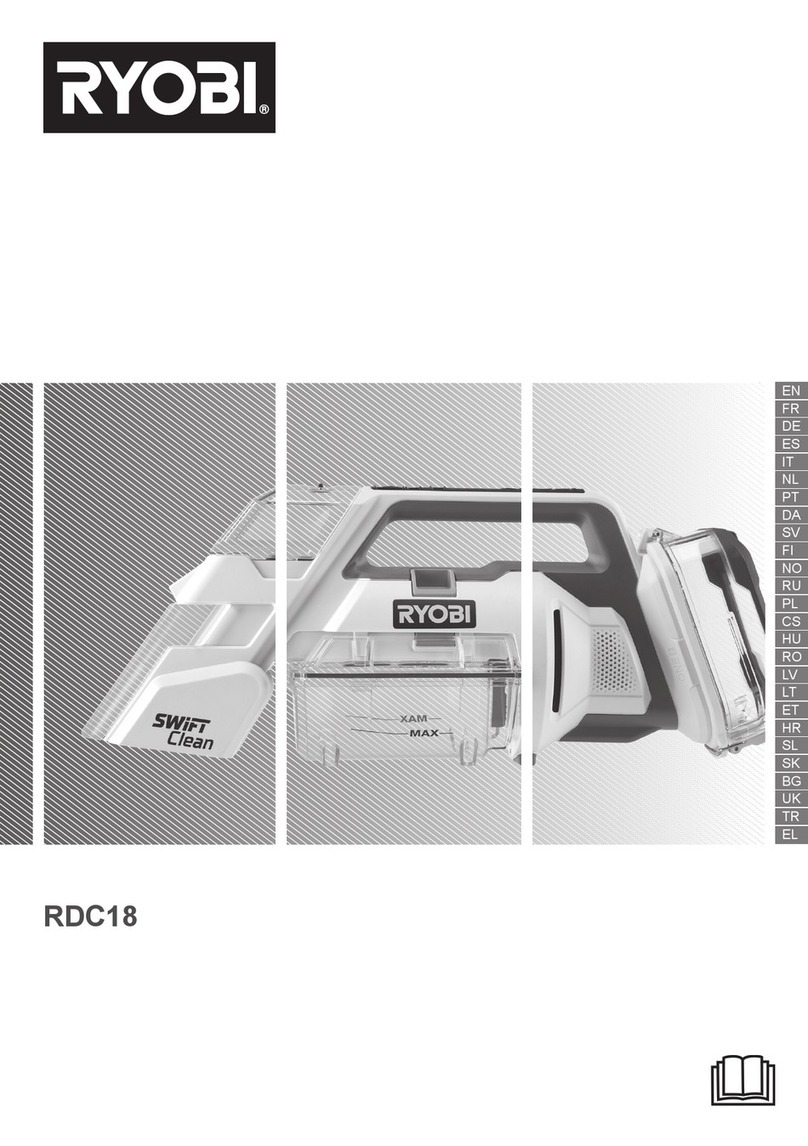
Ryobi
Ryobi RDC18-0 User manual

Ryobi
Ryobi P719 User manual

Ryobi
Ryobi RVC1218P-P Operation manual

Ryobi
Ryobi TUFF SUCKER VC180 User manual
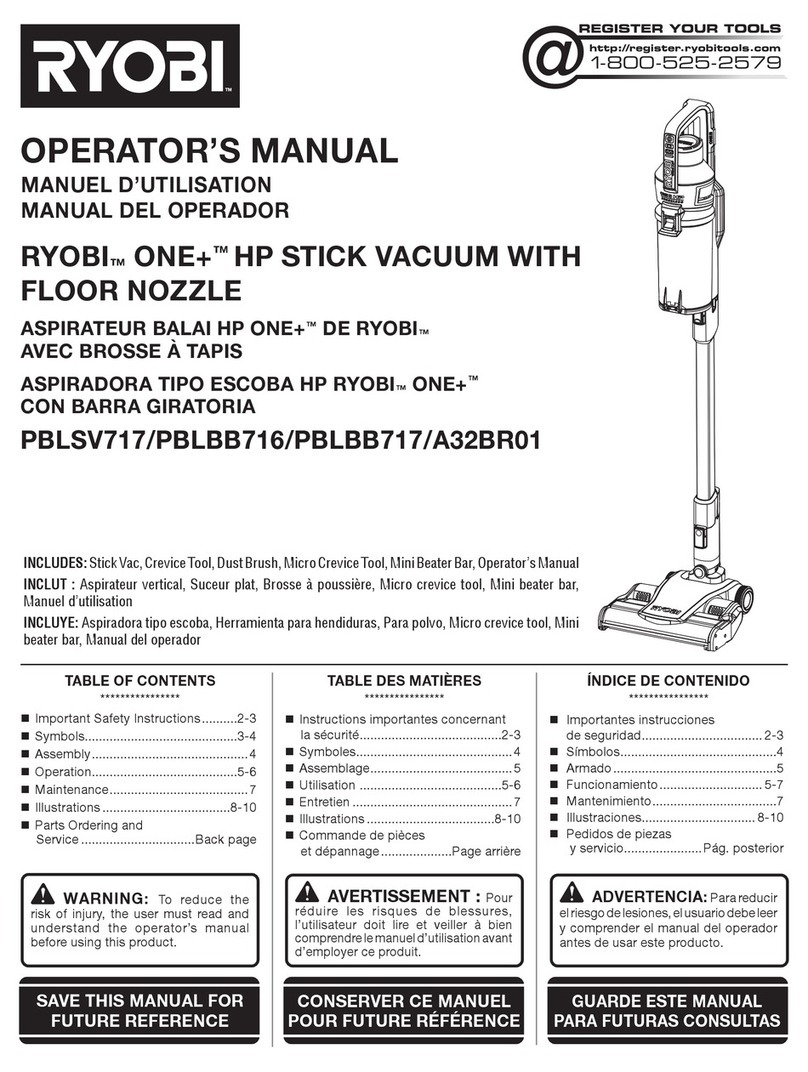
Ryobi
Ryobi ONE+ PBLSV717 User manual

Ryobi
Ryobi CHV182G Operation manual
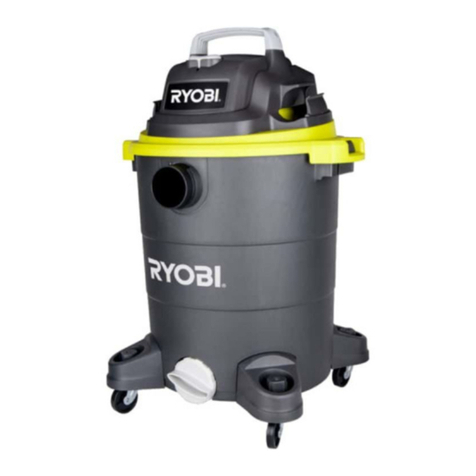
Ryobi
Ryobi RVC-1430PPT-G Operation manual

Ryobi
Ryobi VC20HD Operation manual
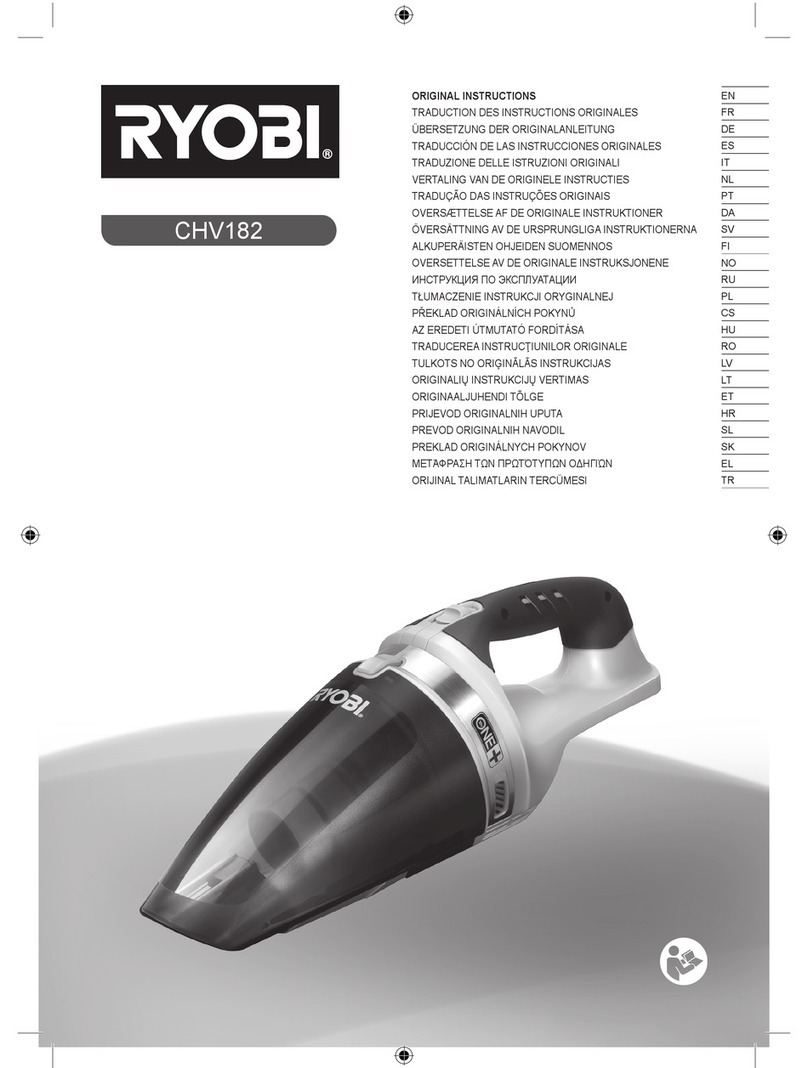
Ryobi
Ryobi CHV182 User manual

Ryobi
Ryobi TC400 User manual

Ryobi
Ryobi R18XSV9 User manual
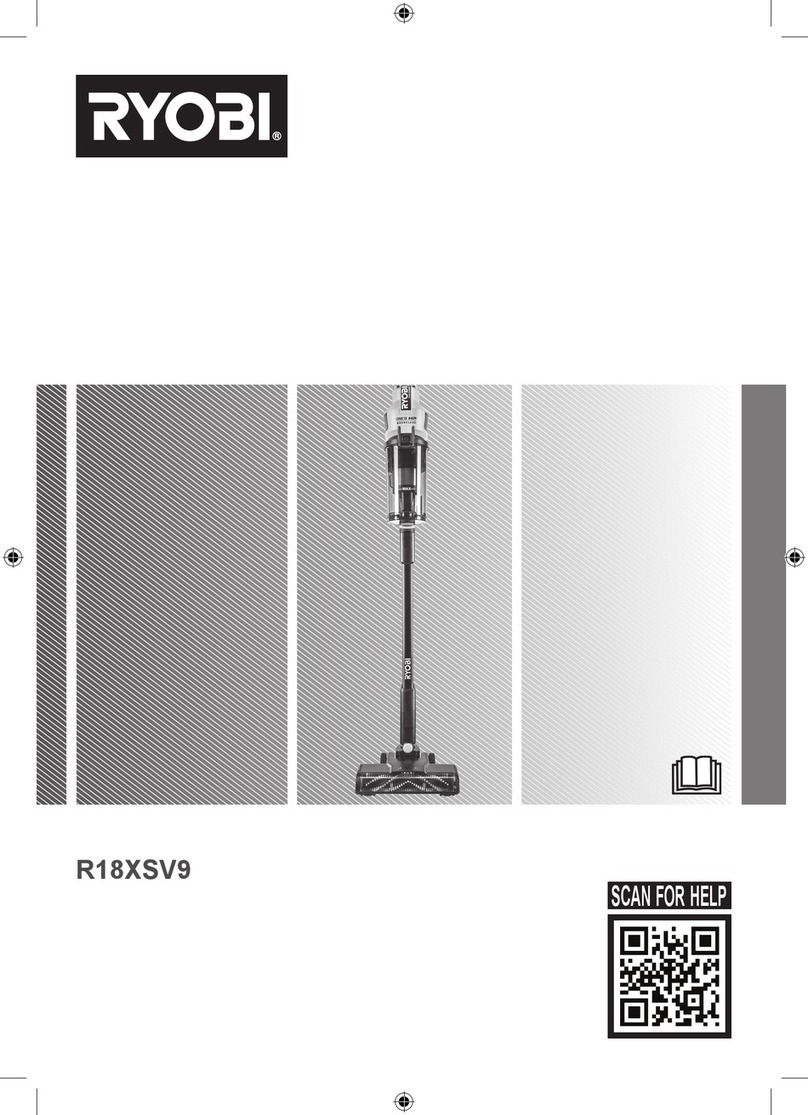
Ryobi
Ryobi R18XSV914 User manual

Ryobi
Ryobi RACWDV15 Operation manual
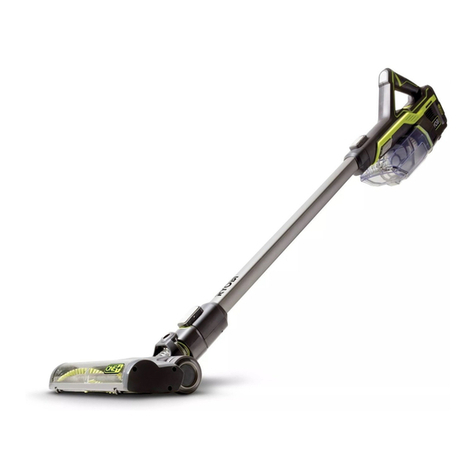
Ryobi
Ryobi R18SV7 User manual
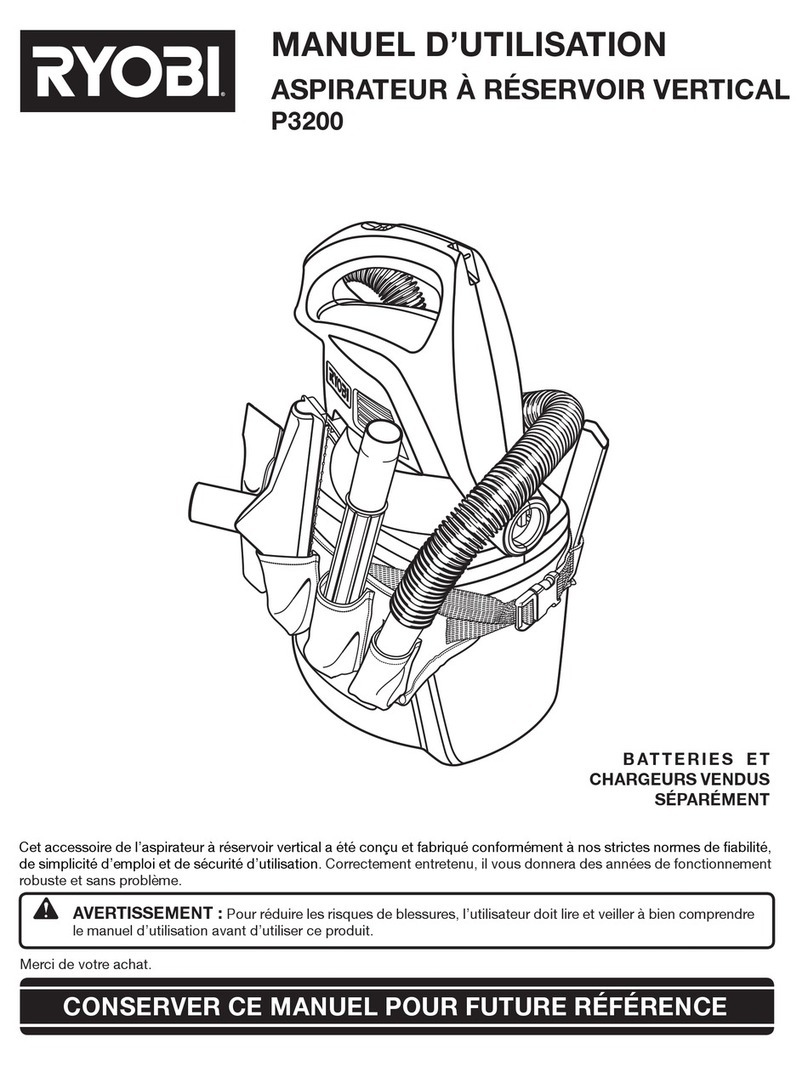
Ryobi
Ryobi P3200 Configuration guide
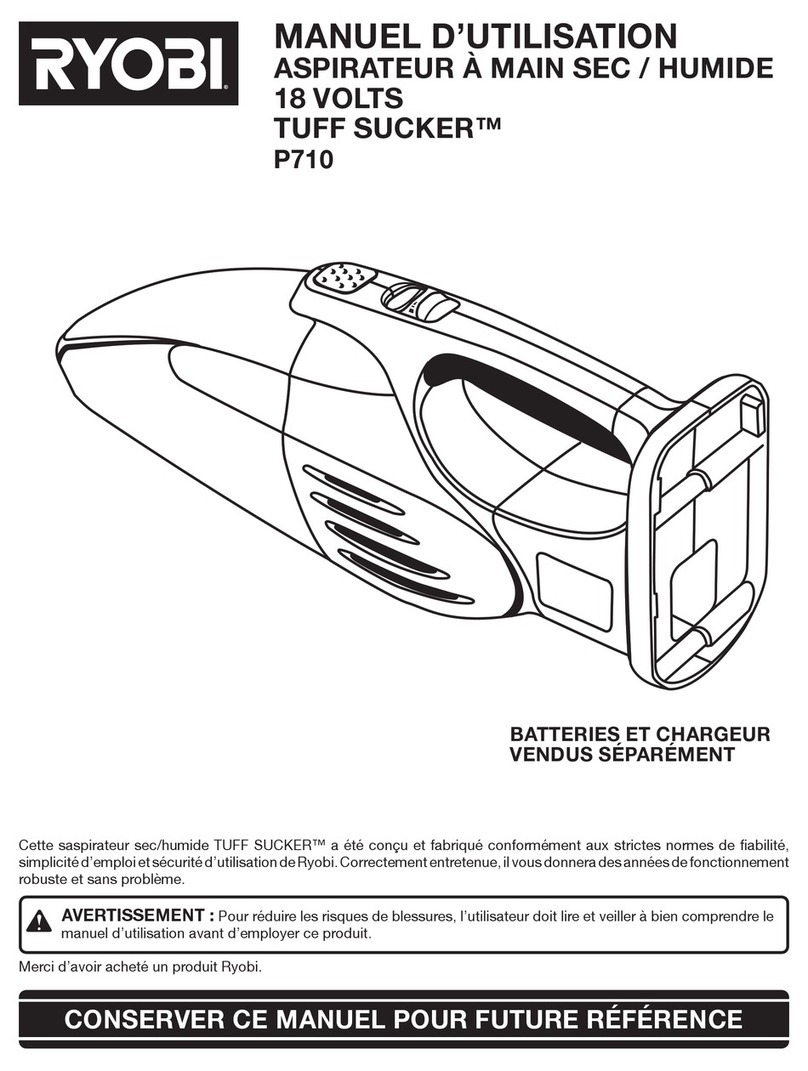
Ryobi
Ryobi TUFF SUCKER P710 User manual
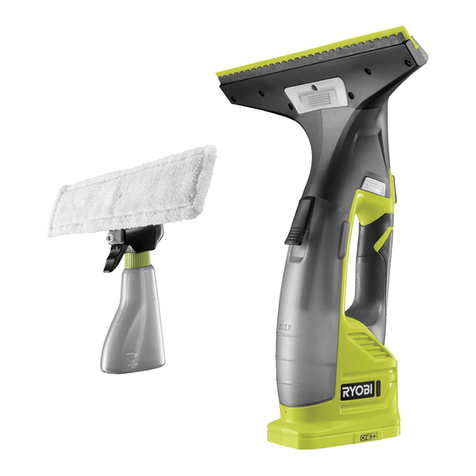
Ryobi
Ryobi R18WV User manual


